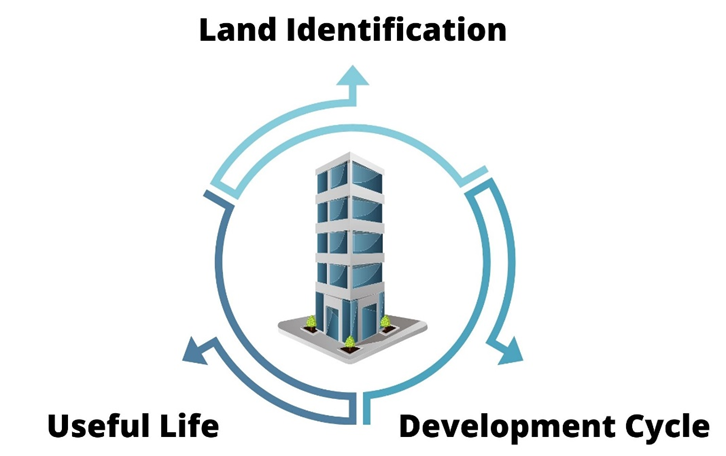New Build Investment Property Masterclass: Chapter 9 - Real Estate Lifecycle
The real estate lifecycle
Except for very few cases, built improvements on the land have a lifespan. Ultimately, the improvements on the land are wasted, either economically, physically, or functionally. When this happens, the land will be redeveloped. Theoretically, it will be redeveloped into its Highest and Best Use.
This process is described as the Real Estate Lifecycle.
Figure: Real estate lifecycle

Land identification
All residential development has one thing in common, land. You cannot build a building without having somewhere to put it! The first stage of development is to identify a parcel of land.
Rather than starting with a vacant parcel of land, most development involves taking a parcel of land with existing improvements such as an office building or industrial building, then demolishing it and developing a new building on the land. Typically, developers will look for existing buildings where the land is not being utilised at its Highest and Best Use.
Development cycle
The developer assembles a team of development professionals to plan what type of development is to be delivered. This consists of several core activities:
- Planning permission and/or relevant development consent: A developer must develop detailed development drawings and make a formal application to the relevant authorities for the rights required to develop the land.
- Construction: The new buildings and improvements must be physically constructed.
- Sales and marketing cycle: The new building will be promoted and sold to its new owners.
Useful life
The building will perform the function for which it is designed. The longer that this process can be extended, the greater the return relative to the initial cost. Eventually the improvements on the land will become obsolete; this could occur for several reasons, including:
- Changes in taste: People simply no longer wish to use the site for its intended purpose; for example, if the main employer in the town closes down, people may not want to live there anymore because of the limited employment opportunities.
- Dilapidation, wear, and tear: Buildings age due to several factors, including the environment, movement to the soil, the weight of the structure itself, changes in materials and laws (asbestos and cladding), new technologies, external environmental factors, and general wear and tear through use
- Changes to planning laws: As cities expand and grow, zoning and intended uses can change.
- Retail: With the rise of internet shopping, how retail space is used is changing fast. This has led to large areas of vacant shops on urban high streets, as they are simply no longer economically viable due to reduced footfall.
For whatever reason, other than in some unique circumstances, this process will take place and the development cycle will begin again.
 By
By


